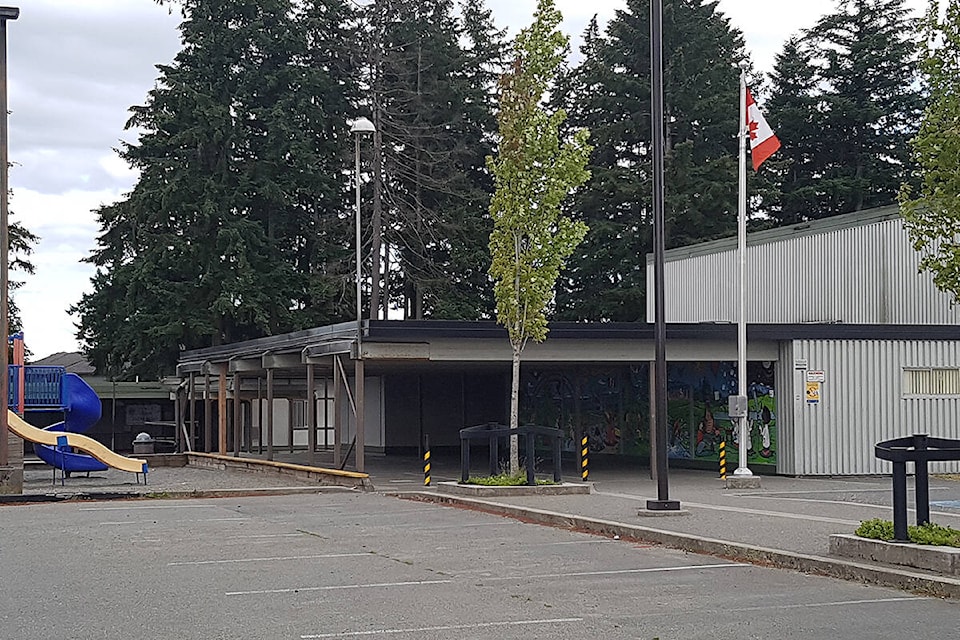The floor is cracked, and buckling; the building has lead pipes running throughout, wall panels contain asbestos, a kitchen is found in a converted change room, and a courtyard outdoors is often littered with drug paraphernalia and garbage in the mornings.
The place described above is one the average Campbell Riverite would probably quit a job in order to avoid spending time in.
Yet, Cedar Elementary is where 175 local children from Kindergarten to Grade 5 spend their days from September to June.
John Kerr, board chairperson for School District 72, said the board is doing everything it can do advocate for the replacement of the school.
“It’s time,” Kerr said. “The building has been in rough shape for years.”
READ MORE: New Cedar Elementary remains priority for Board of Education
READ MORE: Cedar Elementary gets seismic review
This might sound familiar to readers of The Mirror. For more than six years, the Board of Education has submitted the replacement of the school building to the Ministry of Education as the district’s top capital need.
“We met with Minister (Rob) Fleming twice, Minister (Mike) Bernier once, and nothing happened, so now we’re trying to get a meeting with Minister (Jennifer) Whiteside,” Kerr said.
The board has prepared a video outlining all of the buildings deficiencies, and have created advocacy letters which can be sent to Minister Whiteside.
With each passing year, the case becomes more clear.
In 2020, a seismic review was conducted on the school grounds. Once completed, its recommendations called for upgrades totaling $7.12 million. With recent cost increases, that number might now be low.
The school, which was built in two stages (1957 and 1964), is designed for a different era of education too. Counselling services and indigenous support take place in another converted change room. A workspace for students working one-on-one with an adult has been facilitated in the library office book room by hanging a curtain to separate the space.
If it wants to move into the 21st century, it is time to make some changes.
“Modern education dictates that we need to have unique spaces within the school,” Kerr Said. “And we need to have spaces for the supports for our students, and for outside agencies as they are needed.
“The kids deserve a safe and welcoming place to learn.”
He noted the marvelous job maintenance staff have done of keeping the school running, but added the school has served its purpose.
“When you look at some of the schools that have been built around the province and you compare this school to them, it’s not even close,” he said. “Under the facilities condition index the province uses to rate the condition of schools, we’re well into the – very poor – category.”
The index runs from .61 to 1.00, and Cedar Elementary was given a .71 rating last time it was ranked. As a result, a common reason for transfer requests is due to parents’ dissatisfaction with the condition of the building.
The board has a clear idea of what they are looking for in a new education facility.
It is hoping, with funding approval from the Ministry and through subsequent community consultation to see the school replaced with a building that resolves longstanding safety concerns, is conducive to modern ways of teaching and learning, integrates community supports under one roof while becoming a neighbourhood learning centre, and honours the Indigenous heritage of most of the students in the school.
The new school building could also become a natural location to support and expand the district’s Kwak’wala and Lik’wala Bilingual program which is currently only for grades K-2.
“We believe a new Cedar Elementary could serve as a provincial model for how schools can support and strengthen learning of Indigenous ways of knowing and doing, work towards truth and reconciliation and start to heal from the past damages caused by the educational system, for the benefit of all students,” Kerr said
“Instead of continuing to put funds towards trying to sustain this building with seismic upgrades and patchwork fixes, we would like the provincial government to recognize that this building is no longer suitable for the type of education we aspire towards providing the students of British Columbia.”
To find out more about the Board of Education’s vision for a new and improved Cedar Elementary and to lend a voice to support the district’s efforts for funding approval, visit www.sd72.bc.ca/newcedar.
